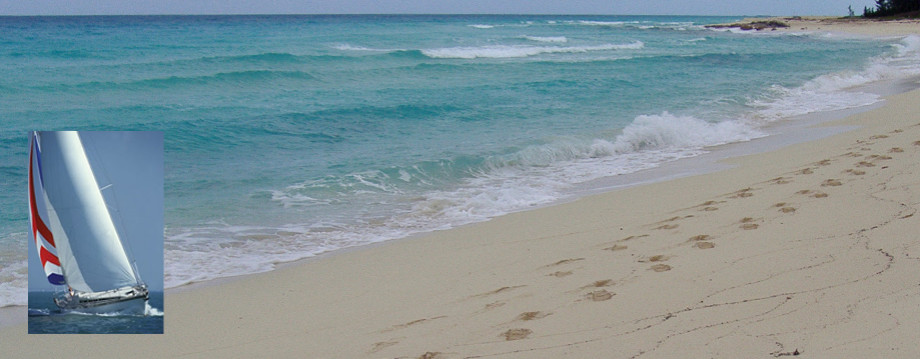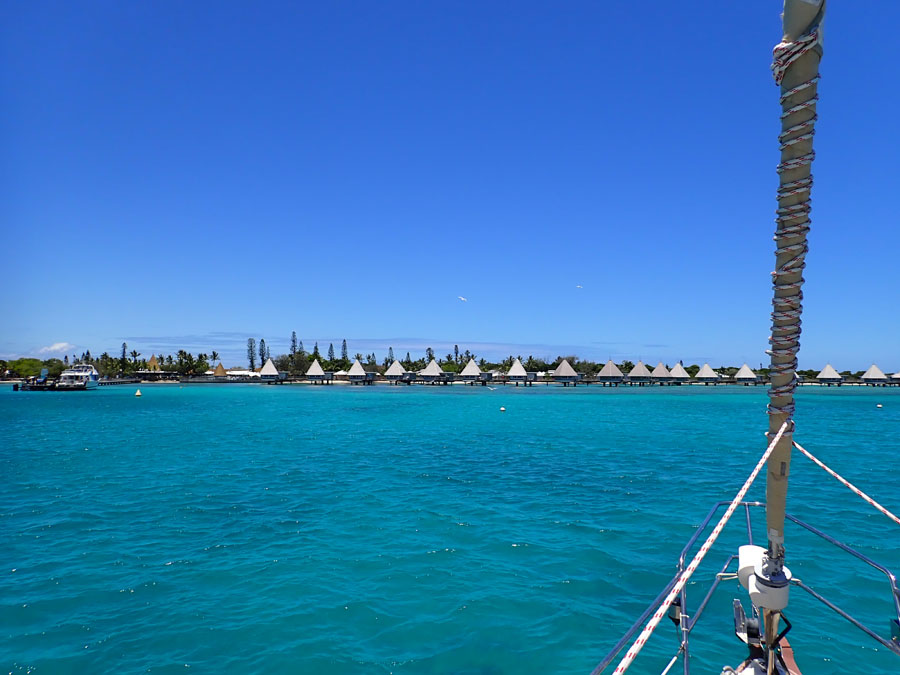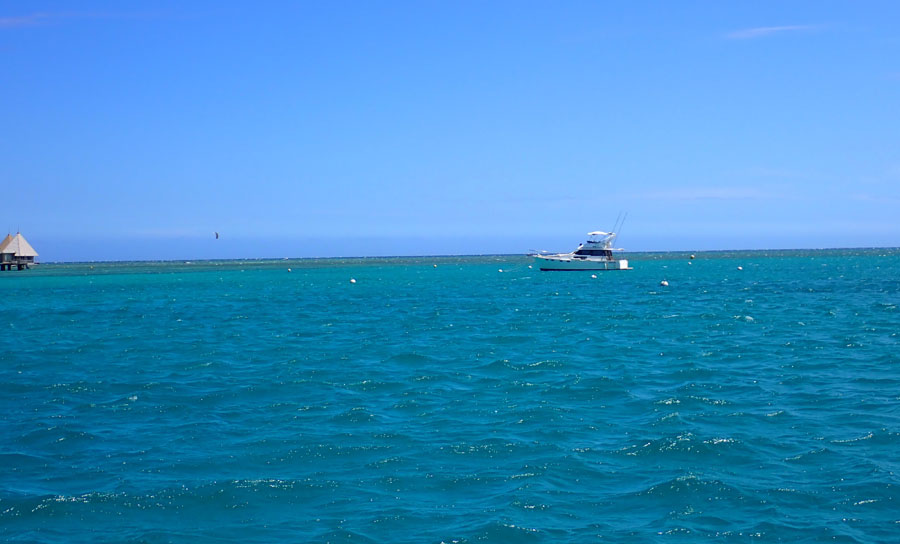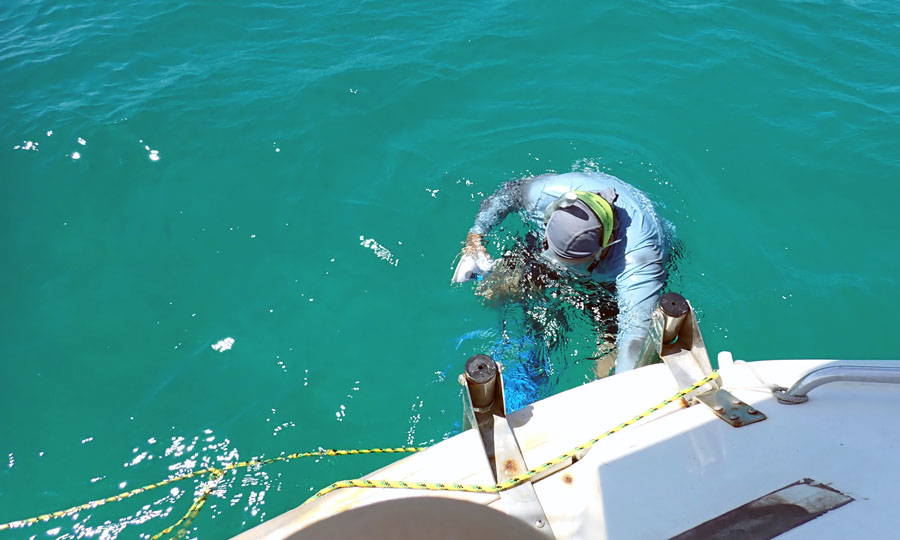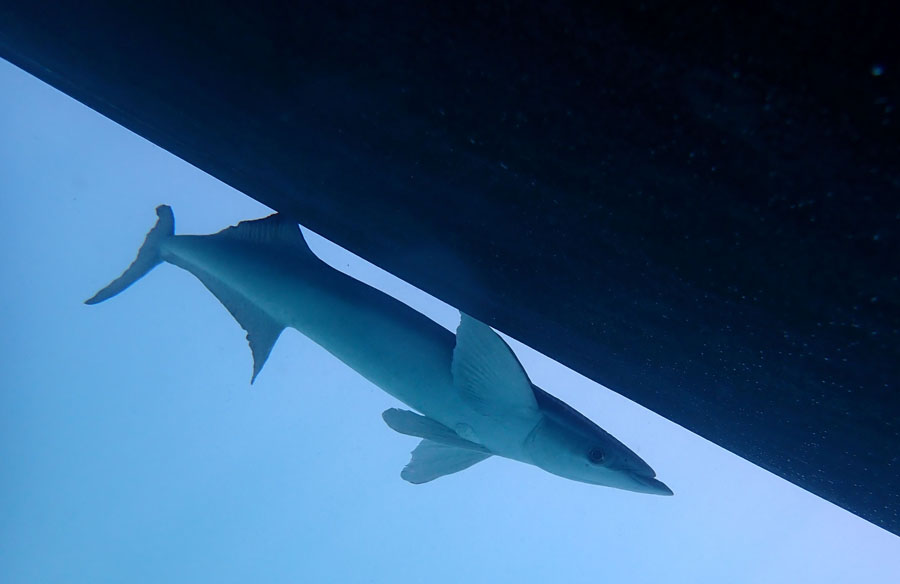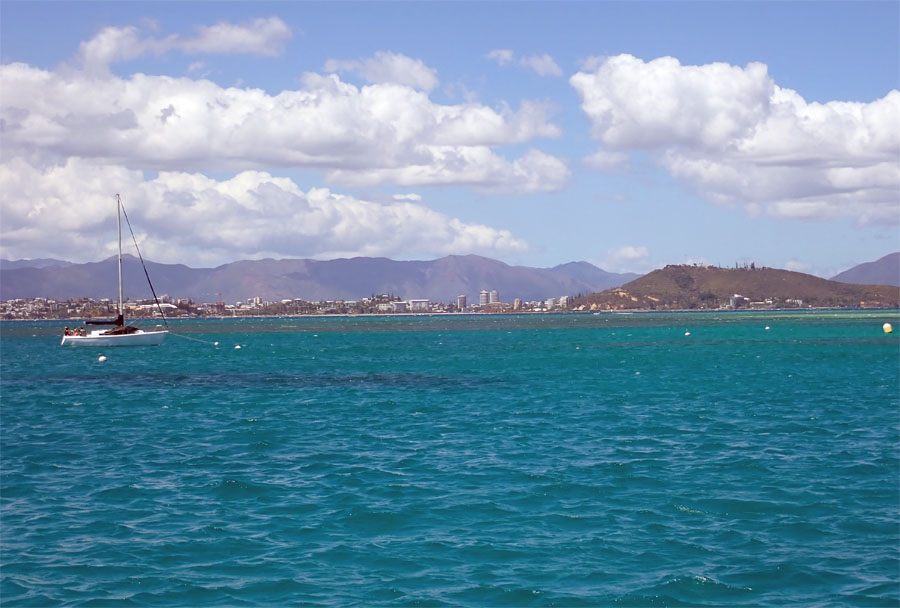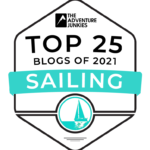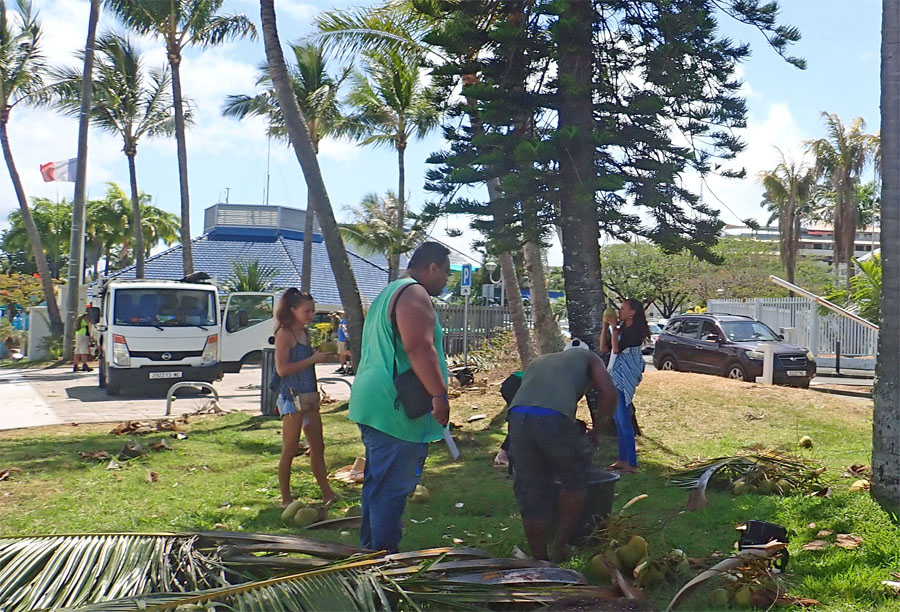
The tree trimmers were happy to give away the coconuts to passersby. They even had a machete to open them.
Unlike most islands we’ve visited so far in the South Pacific, New Caledonia has a large boating population. The marina we call home at the moment is massive and 99% of the boats here are owned by locals. And, this is just one of many marinas. What does this mean for us?
The short answer is it means an awful lot of positive stuff. To begin with, there are services and shops that cater to the boating community. So, we have parts readily available should we need them. Services like sail repair, rigging work, and mechanics are also in good supply. But, the best feature of all is the attitude the government has towards boaters. They encourage safe boating and provide an environment so this can happen.
In a few places we’ve visited, they look at boats as a bit of a nuisance. When I say “they” I mean locals and the government. The government is obviously driven by local complaints. This was especially true in French Polynesia. And quite honestly, I can’t blame the locals for their complaints.
Cruisers pounce on French Polynesia at the end of each cyclone season en masse. Many cruisers now travel in large packs or rallies. This means they might hit a particular port, atoll, or island, and when they do they just wipe out the food and supplies with little empathy for the locals. One of the worst offenders is the World Arc – a round-the-world rally done at such a fast pace the sailors have little time to embrace local communities or travel inland to actually sightsee in the countries where they stop. Up to 70 boats can hit all at once and needless to say the impact is not positive for locals.
We witnessed this firsthand in Galapagos when the Arc boats completely wiped out the towns single grocery store. In French Polynesia, we noticed the stores on atolls holding back fresh veggies for locals. In addition to grocery hoarding, another complaint is anchoring too close to the shoreline and destroying coral formations with anchors. Several boats we know speak of experiences of being wrapped around bommies with their anchor chain.
As the boat moves in the wind, the chain is dragged about on the bottom and will often become entangled with coral heads. When the boat tries to leave, the coral is destroyed and broken. Sadly, it will take many years for the coral to grow back. This is like cutting down a huge shade tree and then planting an acorn. There are ways to avoid this such as floating the chain (a controversial technique). Or, using mooring buoys will save the coral.
Because of the complaints from locals, the some governments have started to implement fees, restrictions, and even full anchor bans. In French Polynesia, this has led to some very heated debates between the cruising community and the government. I am of the opinion the cruising community has harmed itself and the bans are mostly warranted. New Caledonia is different.
Because of the large local boating population (that wasn’t apparent in French Polynesia), the locals don’t complain about boats. They embrace the sport and eagerly participate.

We’ve seen more turtles here than any place we’ve ever been. This one was just a couple of meters from the boat. We even see them in the marina.
In New Caledonia, the popular anchorages have free moorings. They are on a first come first serve basis. Besides protecting the coral, there are other benefits. More boats can moor in less space since swing room is minimized as all the boats are on the same “leash”. There are some old salts who refuse to use moorings and claim they entrust their own chain and anchor over the mooring set up. While this might be true, it is in my opinion extremely selfish. When we tie to a mooring, it doesn’t take but a few minutes to dive in with a snorkel to check the condition of the arrangement to ensure there is not excessive wear and we won’t break away.
The condition of the mooring buoys we have tied to while in New Caledonia have all been excellent. Because of the large local boating community, the government here supports the activities. They maintain and install mooring. The numbers continue to grow as I write this. It is our understanding that if we enter an area where free moorings are available, we are expected to use them. I’m not sure if this is actually a law, but we notice all the locals use buoys.
In places like the BVI, Bonaire, and many French Caribbean islands the use of mooring buoys is mandated by law. They recognized the damage being done by visiting boats and have gone to great lengths to protect their underwater environments. In most places, the underwater environment is a key factor in enhancing tourism. Very few moorings are free like they are here. This is a contention amongst some cruisers. There is a sect of sailors who expect a right to drop the anchor wherever they please, for free.
We look at mooring fees as a small price to pay for protecting coral. With coral comes tropical fish. With tropical fish comes Mark and Cindy with their cameras.
We recently visited Ilot Maitre (Master Island). It is located just 5 km from the mainland and the town of Anse Vata which is a suburb of Nouméa. On the tiny island there is a DoubleTree hotel complete with over the water bungalows. The island is not private and is surrounded by reefs. On the leeward side of the island, there are about 25 free moorings making this a destination for locals seeking some fun in the sun.
When we arrived on a Thursday, it was us and one other boat. Then came a holiday weekend and most of the moorings were occupied. I was a little bit surprised how many boats arrived for just a few hours and left before sunset. For us, it was wonderful entertainment watching the world go by from Cream Puff.
Our reason for being on the mooring was different. We needed to clean our boat bottom and the marina doesn’t allow divers in the water (a really good rule to have). Australia, like New Zealand, has an absolute ton of rules for private yachts entering. I am not going to go into some of the ridiculous ones now and will save these for another post. But, having a clean boat bottom is required. No problem. This is a job I actually don’t mind.
There are very few jobs on the boat that I can do without breaking into a sweat. It is hot in most places we sail and awareness of things like sunburn and heat stroke are concerns with just about any outdoor activity. But, cleaning the boat bottom is different. I use a hookah (a long hose attached to a dive tank aboard the boat) to stay under the water. Starting at the bow and working aftward means the stuff I scrape off drifts away from me. I use a suction cup to hold on and not drift off. Cindy keeps one eye on me and one on my hose and air supply. Between scrapes, I take in the underwater life. In this circumstance, I think I upset a large remora.
It’s not unusual to see a couple of remora lurking or stuck to the bottom of the Puffster hitching a ride. However, this one was pretty large. Once they attach, they are reluctant to give up their host and move on. This was true with this particular fish. It really wanted to stick to the hull and as I cleaned it, it had to keep moving. It wasn’t happy.
There is a common misconception that Remoras clean the bottom of boats that they attach to by eating the growth. This isn’t true. They are nothing more than hitchhikers. When they attach to larger fish, like sharks, they will eat scraps that predator fish leave behind. Smaller remoras, may also consume parasites, like copepods or other small organisms, that infest the host’s skin or gills. If all else fails they can filter plankton while their host fish moves them through the water.
Remoras don’t seem to be afraid of much. Even with my splashing about and trying to chase this thing off, it seemed unphased. You’d think it’d just find another boat in the area, but no. It really liked Cream Puff. After spending a total of 4 or 5 hours under the boat with this fish, it won. When I was done, I glanced back to see the fish attached to the keel. I wonder if it is still there.
So, the bottom is clean and we are ready to move westward to Australia. Wouldn’t you know it, the weather is now being uncooperative. For the past 4 weeks there was perfect sailing weather between here and Australia and we’ve watched quite a few boats enter New Caledonia and leave. We stayed busy with tasks that included some engine work and long-stay visas. But, now that we want to go, all hell has broken loose out there on the ocean with huge waves and strong winds.
Sometimes it seems like we spend most of our time waiting for weather.
We are both excited about visiting Australia and eagerly await a nice 5-day’ish sail. We are convinced we want to come back to New Caledonia next winter and continue to explore here. What we have seen, so far, we like.
I noticed a couple of large cruise ships in port now. This is a sign the civil unrest situation is continuing to improve. Some tourism flights have resumed but is is far from being back to normal. My hope is the improvement continues and when we arrive next year, things are mostly back to normal. In the meantime, we will continue to explore and enjoy our time here.
